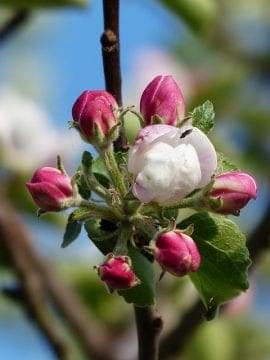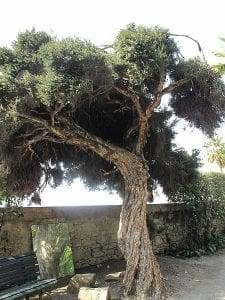Why Practice Apple Tree Thinning?

By June, apple fruit is starting to form and the tree will prioritize what growers call the “King’s fruit.” This is the apple in the center of the cluster that is the tree’s self selected primary fruit of the group which normally gets most of the water and nutrients. Orchardists will prune off the other apple buds to give priority to this fruit.
In June, you will notice that many of the apple buds surrounding the “King’s fruit” will have reddish stems. These will drop off the tree on their own during “June Drop.” In southern climates, this will happen earlier in the year. Even with this natural selection, trees need help. Apple trees are hybrids. Humans have nurtured them into a highly productive state and need extra help from thinning to remain healthy.
Thinning Advantages
-
Summer inspection of the tree for insect, disease, or physical damage
-
Larger, healthier fruit to harvest
-
Decrease weight to tree branches to minimize breakage
-
Decrease needed water or fertilizer to tree by eliminating unproductive fruit
-
Decreased need for pest or disease control by manually thinning fruit that is a home to coddling moths or other insects
-
Increase sun exposure to fruit for more flavonoid production
Equipment needed
-
Sharp pruning shears
-
Rubbing alcohol and gauze/cotton rag
-
Bucket for rejected fruitlets
-
Tarp
-
Ladder
Procedure
-
Spread tarp under tree.
-
Put bucket in the center of the tarp.
-
Select a branch to inspect and start with the cluster at the tip of the branch.
-
Locate “King’s Fruit” in target fruitlet cluster.
-
Inspect the fruitlet clusters for diseased or damaged fruit.
-
If the “King’s Fruit” at the center of the cluster is damaged, infested or diseased, select the 2nd largest fruit as the one to preserve from the cluster.
-
Either snip rejected fruitlets from cluster with pruning shears or twist fruitlet to break it from the cluster taking care not to damage the spur, leaves or branch.
-
Prune off clusters less than 6 inches apart from each other.
-
Throw fruit into bucket to be composted or buried.
-
Remove any damaged branches with pruning shears at the base of the branch and wipe shears with the gauze/rag soaked in rubbing alcohol between branches to prevent diseases from spreading.
-
Throw damaged branches onto tarp for proper disposal.
-
Work into the tree being certain that your ladder is stable at all times.







